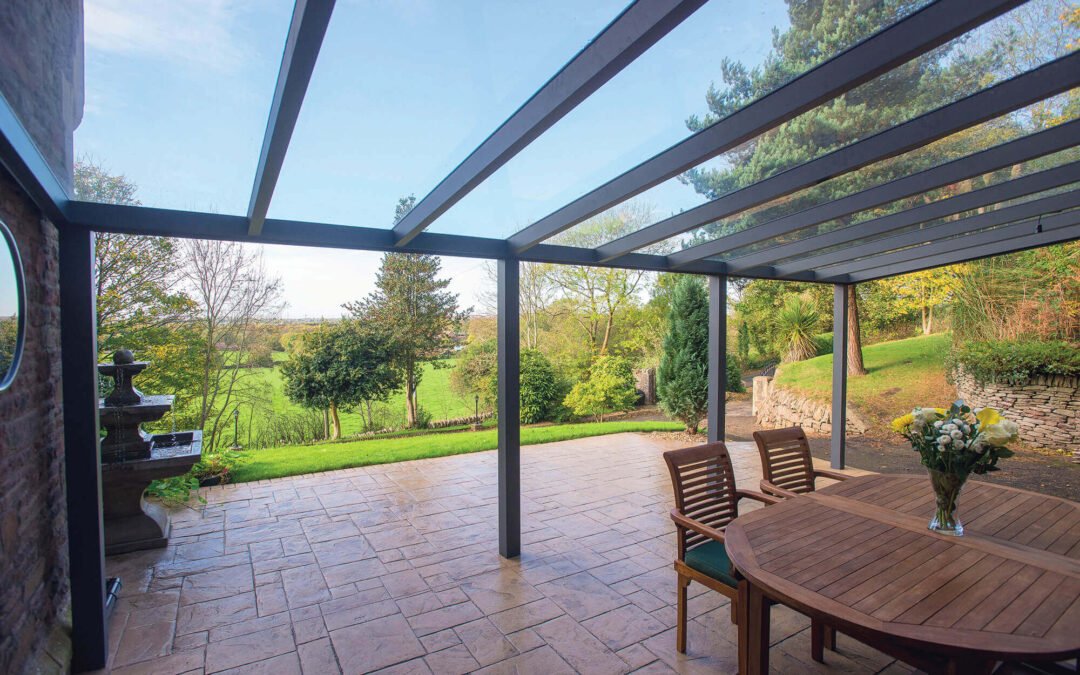A veranda isn’t just for summer barbecues and long evenings outdoors. With the right care and a few clever additions, your veranda can become a cosy, functional space you’ll enjoy throughout autumn and winter. Whether you want to protect your investment or create a welcoming spot for family and friends, this guide covers everything you need to know about maintaining and using your veranda year-round in the UK.
Essential Maintenance Before Autumn Hits
As summer fades, your veranda will face stronger winds, more rainfall, and much cooler temperatures. A little preventative maintenance now can save you from costly repairs later and ensure your space is safe, comfortable, and long-lasting.
- Clear gutters and roofs – Fallen leaves and debris can quickly build up in gutters or on veranda roofs during autumn. This leads to blockages, leaks, and even damage if water backs up. A quick clean every few weeks prevents long-term problems.
- Check seals and joints – Pay close attention to glazing bars, roof fixings, and side joints. Tiny gaps can let in draughts and rainwater, which may cause internal damp or mould if ignored.
- Protect timber – Wooden verandas are beautiful, but they’re also more vulnerable to moisture. Applying a seasonal treatment or protective oil helps prevent swelling, cracking, or rot.
- Inspect drainage – Heavy rainfall is common in the UK. Make sure water runs off correctly and doesn’t pool around the veranda base, which could cause long-term structural damage.
By taking these steps in early autumn, you’ll keep your veranda in excellent condition and ready for use throughout the colder months.
Weatherproofing Your Veranda
To enjoy your veranda comfortably through autumn and winter, it’s worth making a few adjustments to keep the space warmer and more sheltered.
- Install side screens or glass panels – These act as a barrier against wind and rain, turning an open veranda into a more enclosed, conservatory-like space without losing light.
- Use outdoor rugs and non-slip mats – Not only do they keep your feet warmer, but they also improve safety when surfaces get slippery in wet weather.
- Protect your furniture – Waterproof covers or storage boxes will keep cushions, chairs, and tables in great condition so they’re ready to use on dry winter days.
Heating and Lighting Ideas
Shorter, colder days don’t mean your veranda has to sit unused. With the right heat and light, you can create a snug retreat even in the depths of winter.
- Outdoor heaters – Electric patio heaters or infrared panels are safe, effective, and easy to use. They provide instant heat and work brilliantly for verandas.
- Fire pits or chimineas – Perfect for creating a rustic, atmospheric feel. These work best for open-sided verandas where there’s good airflow.
- Soft lighting – Festoon lights, lanterns, or LED strips add a warm glow that makes the space inviting.
- Smart lighting – Tailor brightness and warmth to match your activity, whether it’s dining with friends or relaxing with a book.
Styling and Décor for Autumn and Winter
A change of season is the perfect excuse to refresh your veranda’s styling. By swapping out summer accessories for warmer, more textured elements, you’ll create a cosy space that feels like an extension of your home.
- Seasonal colours – Bring in rich autumn tones like deep red, burnt orange, and earthy brown through cushions, blankets, and accessories.
- Layering textures – Outdoor rugs, thick cushions, and weather-resistant curtains add comfort and warmth while making the space feel homely.
- Evergreen planting – While summer flowers may fade, hardy evergreens such as boxwood or potted shrubs will keep your veranda looking lively.
- Festive touches – Add seasonal personality with pumpkins in October, fairy lights in December, and spring bulbs in February. These little changes keep the veranda feeling fresh year-round.
Creative Ways to Use Your Veranda in the Colder Months
When designed and styled properly, a veranda becomes much more than a summer shelter. Here are some creative ways to use yours even when temperatures drop:
- Cosy dining spot – With a heater, soft throws, and candles, your veranda is the perfect place for relaxed autumn meals or festive winter gatherings.
- Sheltered play area – Children can still enjoy being outdoors without being exposed to wind and rain. Add a small play tent, ride-on toys, or even a sandpit under cover.
- Festive entertaining space – Transform your veranda into a Christmas grotto or New Year’s Eve party area with lights, décor, and mulled wine.
- Plant protection – Use your veranda as a temporary greenhouse to protect delicate plants from frost, while still keeping greenery visible through the colder months.
With a little preparation, your veranda can be a true all-season extension of your home. By keeping on top of maintenance, weatherproofing for comfort, and refreshing your styling for autumn and winter, you’ll unlock the full potential of your space well beyond the summer months.
Thinking about installing a veranda that looks beautiful and performs in every season? Explore our range of aluminium verandas.
FAQs About Verandas in Autumn and Winter
Can I use a veranda in winter in the UK?
Yes — with the right weatherproofing, heating, and décor, a veranda can be enjoyed all year round.
How do I stop my veranda roof leaking in heavy rain?
Regularly clear gutters and check seals and fixings for gaps. If problems persist, professional resealing may be needed.
What is the best heating option for a veranda?
Electric patio heaters or infrared panels are efficient, safe, and effective for outdoor spaces.
Do verandas add value to a property year-round?
Yes. A veranda is an attractive feature that boosts kerb appeal, adds functional living space, and makes a home more desirable.

